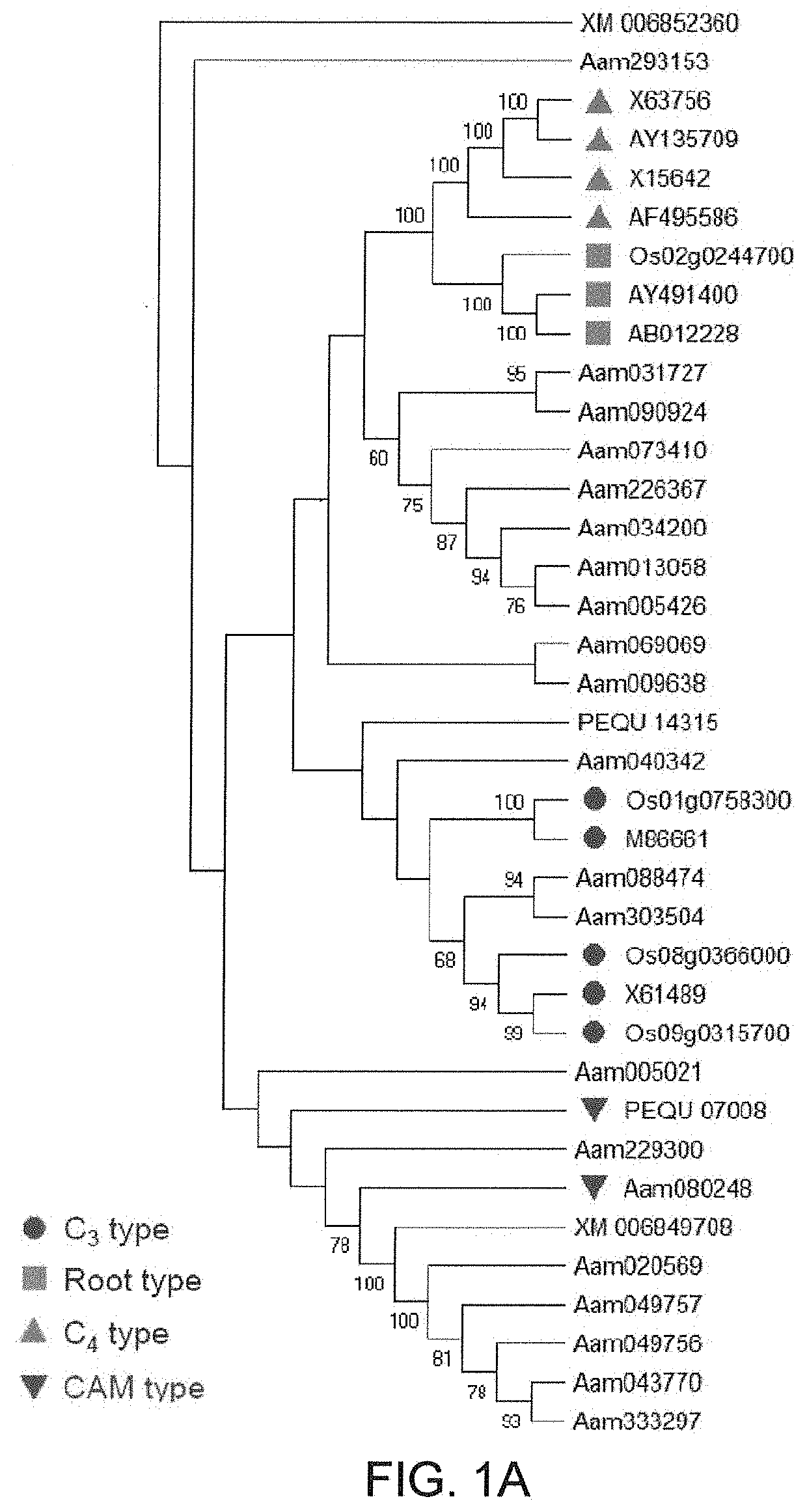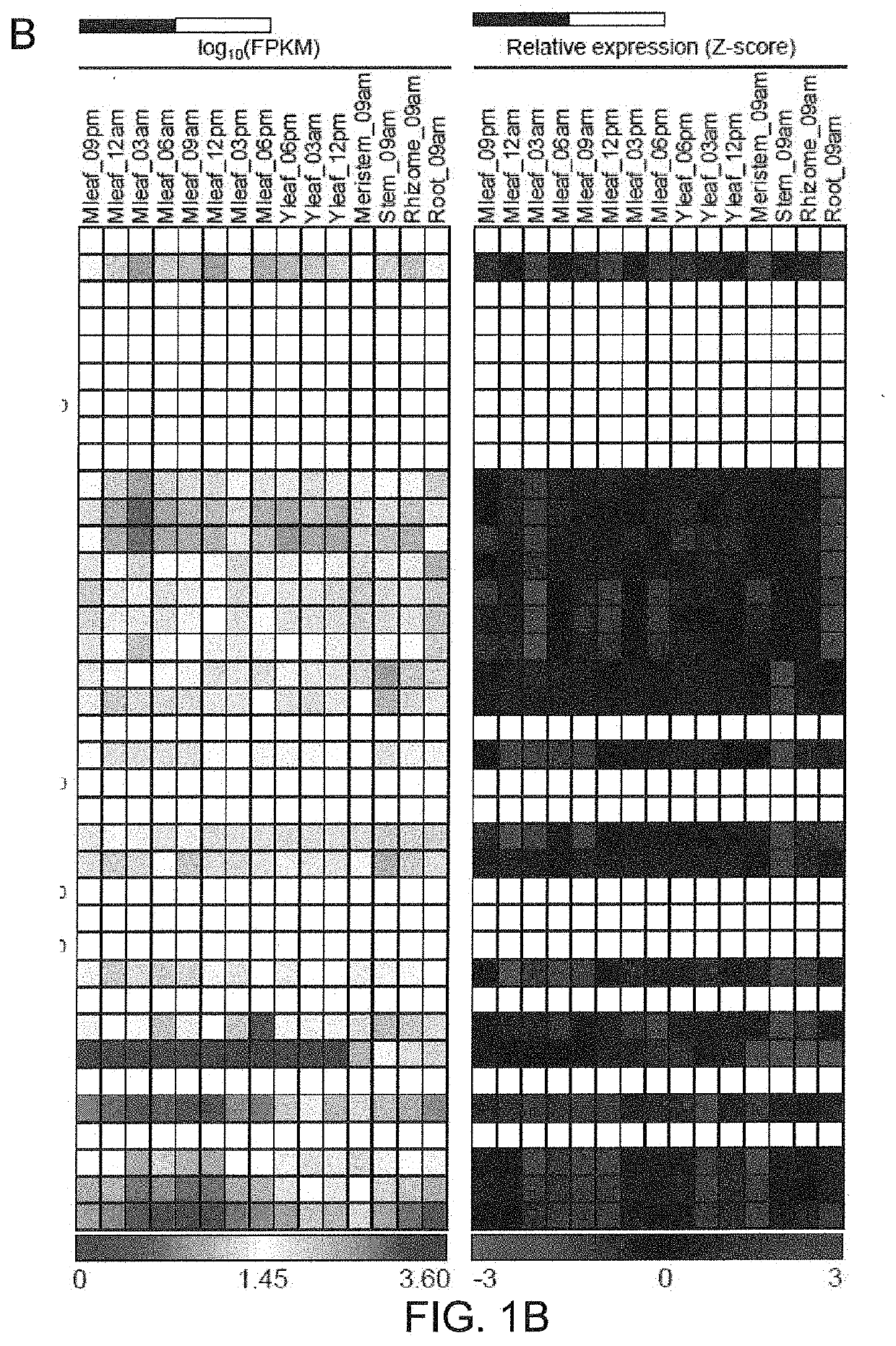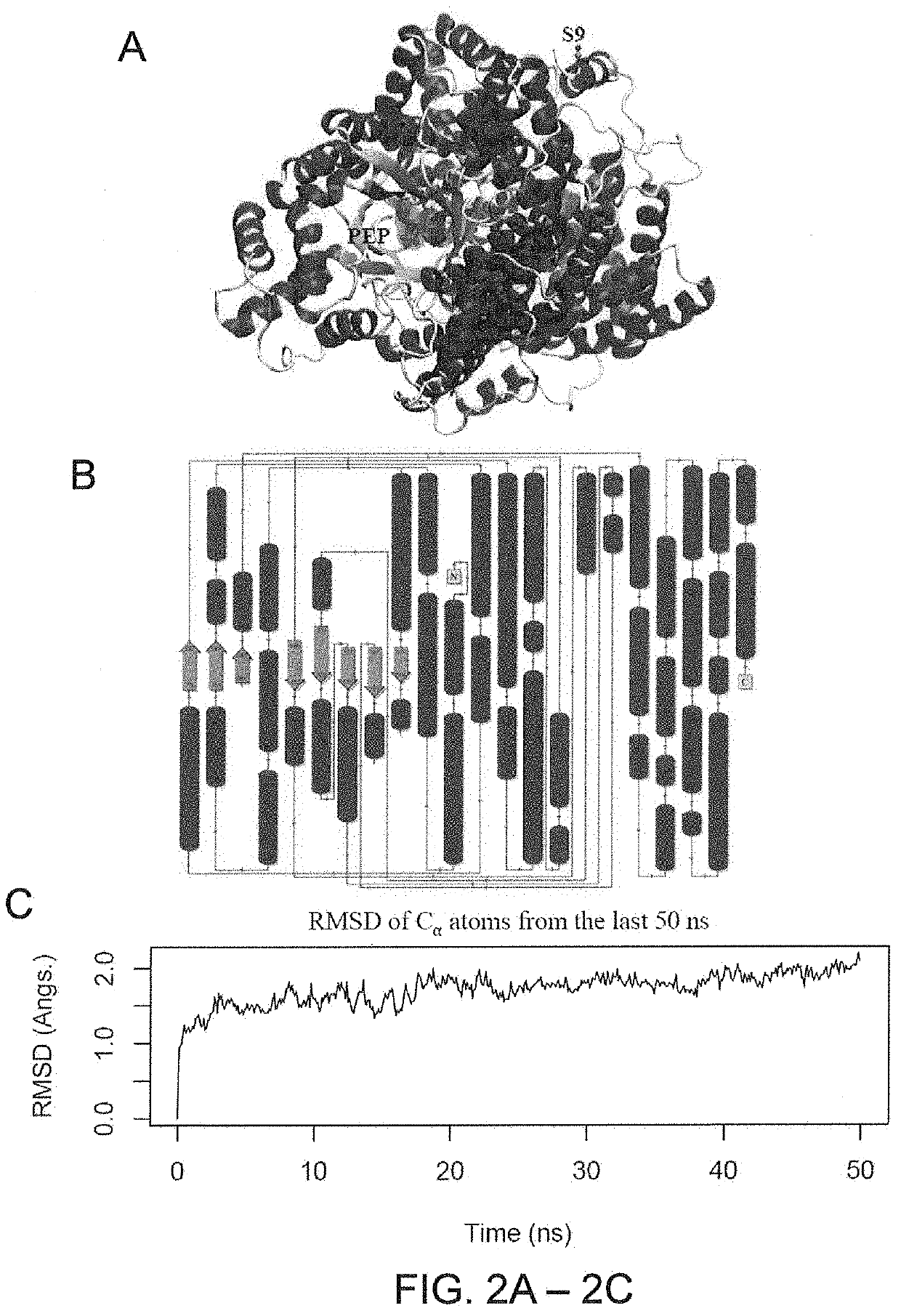Genes for enhancing salt and drought tolerance in plants and methods of use
a technology of plants and genes, applied in the field of genes for enhancing salt and drought tolerance in plants and methods of use, to achieve the effects of improving drought and salt tolerance, biomass production and water-use efficiency, and increasing the photosynthesis ra
- Summary
- Abstract
- Description
- Claims
- Application Information
AI Technical Summary
Benefits of technology
Problems solved by technology
Method used
Image
Examples
example 1
CAM-Specific PEPC in Agave americana
[0105]Through a tBLASTn search against A. americana transcriptomics data (Abraham P E. et al., 2016. Nature Plants, 2: 16178. 500) using the PEPC protein sequences of Arabidopsis thaliana as queries, the inventors identified a total of 21 transcripts encoding PEPC in A. americana. Several types of PEPC are present in plants, including plant-type PEPCs (PTPCs) and one bacterium-type PEPC (BTPC) (O'Leary B. et al. 2011. Biochemical Journal, 436: 15-34; Shi J. et al. 2015. Plant Physiology, 167: 671-681). The plant-type PEPCs studied so far are classified into four groups, including C3, C4 and CAM-types from photosynthetic tissues and root-type from non photosynthetic tissue (Masumoto C. et al. 2010. PNAS, 107: 5226-5231). In order to gain insight into the evolutionary relationships among PTPCs, the inventors constructed a phylogenetic tree using the 21 predicted Agave PEPC transcripts and the C3-, C4-, CAM- and root-type PEPCs from rice (Oryza sati...
example 2
AaPEPC1 Binds to Phosphoeno / Pyruvate
[0106]Phosphoenolpyruvate (PEP) is the substrate for PEPC enzymes (Kai Y. et al. 2003. Arch Biochem Biophys, 414: 170-179; Gonzalez-Segura L. et al. 2018. Journal of Biological Chemistry: jbc. RA118. 002884). To understand whether or not AaPEPC1 binds to PEP, the inventors developed protein structural model using I-TASSER (v.5.1) accompanied by 200 ns molecular dynamics (MD) simulation (FIGS. 2A-2C). The last 50 ns of the MD trajectory was taken to refine the AaPEPC1 structure. The root mean square deviation (RMSD) of the α-carbon atoms of all residues is ca. 2.0 Å (FIG. 2C), which is reasonable for fluctuations of the 964 amino acids (AA) protein. From the last 50 ns MD trajectory, the snapshot that is closest to the average structure (with RMSD=0.8 Å) was selected as the final model (FIGS. 2A-2B). Since the crystal structures of bacterial (Escherichia coli) PEPC (PDB entry 1JQN) and Z. mays C4-type PEPC (PDB entry SVYJ) are well characterized (M...
example 3
Development of Transgenic Lines of Tobacco Overexpressing AaPEPC1
[0107]After the inventors identified the CAM-isoform of PEPC, the inventors tested the hypothesis that ectopic expression of the AaPEPC1 would bring the C3 plant a step closer toward the CAM state and consequently enhance photosynthetic CO2 fixation and abiotic stress tolerance in tobacco. The AaPEPC1 coding sequences were fused behind the cauliflower mosaic virus 35S (CaMV35S) promoter in a binary vector pBI121 to yield p35S::AaPEPC1 for transformation into tobacco (FIG. 11A). The p35S::AaPEPC1 vector and empty vector (pBI121, EV) were transferred into tobacco via Agrobacterium tumefaciens-mediated genetic transformation. Transformants harboring a single copy of inserted T-DNA were identified from the segregation ratio for kanamycin resistance. Two T2 transgenic homozygous lines (p35S::AaPEPC1_OE1 and p35S::AaPEPC1_OE2) exhibiting different expression level of the AaPEPC1 were randomly selected as representative lines...
PUM
| Property | Measurement | Unit |
|---|---|---|
| Electrical conductance | aaaaa | aaaaa |
| Nucleic acid sequence | aaaaa | aaaaa |
| Stress optical coefficient | aaaaa | aaaaa |
Abstract
Description
Claims
Application Information
 Login to View More
Login to View More - R&D
- Intellectual Property
- Life Sciences
- Materials
- Tech Scout
- Unparalleled Data Quality
- Higher Quality Content
- 60% Fewer Hallucinations
Browse by: Latest US Patents, China's latest patents, Technical Efficacy Thesaurus, Application Domain, Technology Topic, Popular Technical Reports.
© 2025 PatSnap. All rights reserved.Legal|Privacy policy|Modern Slavery Act Transparency Statement|Sitemap|About US| Contact US: help@patsnap.com



